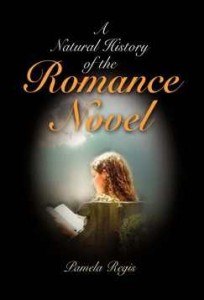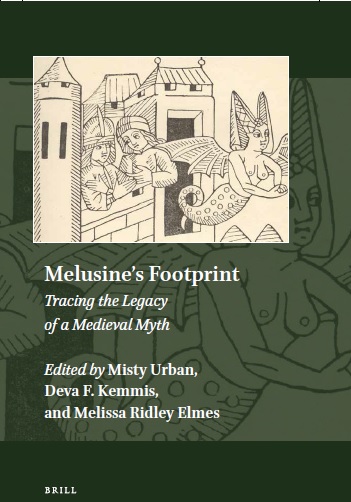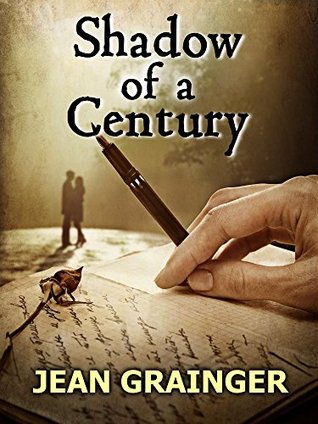
An interesting if occasionally dry survey of the evolution of the romance novel into the modern day’s bestselling genre, and a heartfelt defense of why it’s okay to read (and like) these books.
I’m not sure what makes this scholarly survey a “natural history,” but then again I am not a natural historian, and the phrase reflects Regis’s endeavor to apply academic rigor and scholarly or at least systematic analysis to investigating the appeal of the romance novel in both its historical and present form. She aims to establish legitimacy in several different ways: by offering a definition of the romance novel and then claiming that 18th- and 19th-century bestselling novels like Samuel Richardson’s Pamela and Jane Austen’s Pride and Prejudice were and are romance novels because they fit this definition; by establishing a formal rubric of essential plot elements that identify the romance novel, and then proving that various novels she selects meet this criteria; and by showing that novels sampled from the careers of 20th-century bestselling authors are, by her definition and rubric, romance novels, too.
Legitimacy, if not literariness, of the romance novel, then, is established by its adherence to Regis’s definition of the romance novel as “a work of prose fiction that tells the story of the courtship and betrothal of one or more heroines” (19). There’s little to argue there; it’s not a challenging definition, or a risky one by any means. It gathers a wide swath of existing literature under its shadow. Legitimacy is further sustained when novels that meet this definition also conform to 8 criteria that Regis has identified, which include such ancient plot points as the meet cute, the attraction between protagonists, the barrier to their expression of same, the recognition of love, and the ultimate betrothal, first shadowed by a feature she borrows from Northrop Frye’s discussion of the romance mode in Anatomy of Criticism: the point of ritual death.
It’s all well and good to invoke Frye when discussing the romance (I did when writing my book on Middle English romance, it must be said) but her discussion of this portentous point of ritual death reveals the main weakness of the book: there’s a lot of emphasis through repetition, but little extension, elaboration, or development into the places that would make her analysis truly interesting and potentially fruitful. Why must the free and mutual recognition and declaration of love be put at risk with the threat of or at least the facsimile of death? Why must there be this shadow, and this price, for the comedic conclusion of love and, as is usually implied, marriage, or at least lifelong companionship? Why must the heroine win her way through to the independence to freely choose, and freely acknowledge her choice of companion, only after terrible struggle and pain? Had Regis addressed herself to these questions, she might have arrived at some conclusions that convincingly explain–or at the very least propose interesting hypotheses about–the enduring and in fact ever-growing appeal of this genre, rather than falling back on the usual (and, to my mind, still incomplete) things that have been critically said about the romance novel and the romance at large.
Instead, after a lively, very thorough, and very capable examination of the criticism directed at the romance–criticism in both the academic sense of analysis and criticism in the reviewer’s sense of finding problems or something lacking–the major portions of the book, Regis’s discussion of five historical classics that count as romance novels, and then the discussion of five 20th-century authors who redefined the genre in some way, is limited almost entirely to discussion of formal characteristics. There are occasional forays into appreciating some non-plot-related element of the books–the author’s use of irony, for example (is it possible to talk about Jane Austen and not invoke irony at some point? I think not), or style, tone, or humor, but Regis largely sticks to her rubric of 8 and examines how they apply, in various ways, to the novels in question. Her readings are capable, her sentences strong and swift, her intellect obviously up to the task, but the focus on plot eventually leads to the other minor weaknesses of the book. In assuming that sufficiently proving adherence to both definition and plot formula mark a book as a romance novel, Regis fails to explain why this conformity should make romance novels either (a) literarily respectable or (b) enjoyable to read.
Her own voice emerges quite engagingly in her spirited defense of the novel, especially in talking back to the critics who find the marriage plot mundanely bourgeois, anti-feminist, or socially crippling in its insistence of limiting the fullest expression of a woman’s life to her choice of mate. Regis conducts a sound if swift historical analysis of the aspects of 17th and 18th century English life that made the marriage plot appealing, such as its notion of affective individualism (an outgrowth of the Enlightenment and Renaissance humanism, the idea that the expression of a human personality and achievement of earthly wishes and desires could at all be an interesting or laudable pursuit). In the later portions of the book, however, Regis continues to use the term “affective individualism” as if it is at all descriptive, which becomes difficult and requires some explanation as a form of literary criticism post-modernism, post-structuralism, post-feminism, and post-Marxism, when readers and critics have become more sensitized to the uses of ideology, the limits of language, and the constraints of culture studies.
In a similar fashion, Regis soundly describes the evolution of companionate marriage as a historical idea and ideal, but she treats it as a philosophy that exists into the present moment through the accretion of a long history of literature centered on this ideal, without considering how modern political developments such as secularism, feminism, changing technology, or shifting socio-economic ideals have had their impact. The opportunity certainly presents itself, especially since she’s discussing authors like Jayne Ann Krentz and Nora Roberts–smart, talented, accomplished women who are fully alive to the feminist implications of their independent, self-directed heroines–but, here again, Regis sticks to those 8 plot points, without making the effort to tell her reader what they, now, really mean.
These are complaints, though, about the scholarly aspects of the book. On the whole, Regis has achieved something through the very fact of endeavoring a scholarly critique of the romance novel, even if a strictly formalistic one; romances might not get reviewed regularly in the high-flying channels (though both Publisher’s Weekly and BookPage cover romance novels, and there are of course many competent reviewing channels devoted strictly to that genre), but Regis has established that they function as literature, properly speaking. In the end, her defense–as it must, until the body of scholarship and analysis of the romance becomes more sophisticated and nuanced than the current state–rests on a personal, emotive appeal: if many women in the modern day still get married, still take pleasure in having a spouse or companion, or, if lacking one, desire to have one of their own, isn’t it okay, really, to indulge in reading books of a genre which (Regis doesn’t say it, but this is as far as her analysis gets) really just functions as wish fulfillment? Isn’t it okay, really, that small voice says, if I still want to believe that fairy tales can come true?

